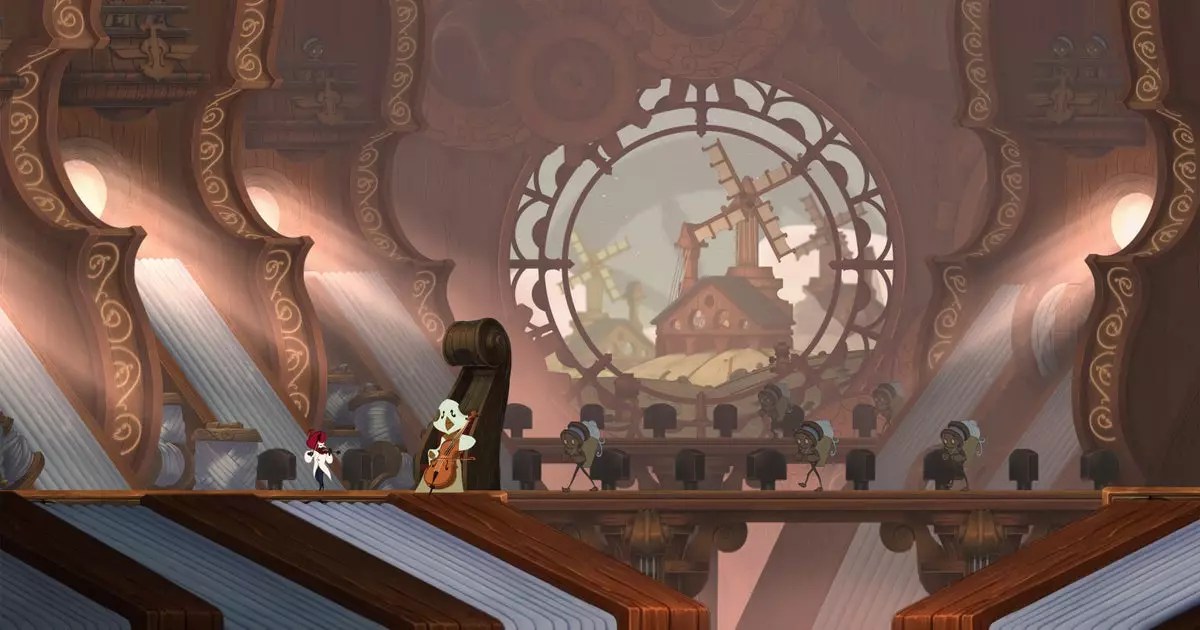In the vast realm of indie video games, few titles merge aesthetics and gameplay as harmoniously as “Symphonia.” This 2D platformer offers players a chance to step into the shoes of Philemon, an intricately designed character who is more than just a violinist; he is a beacon of musical hope in a world that has succumbed to a silence reminiscent of a paused symphony. The game’s striking visuals, inspired by a blend of Cubism and surrealism, invite players to traverse environments where gas lanterns provide flickering illumination, and musical motifs dictate the landscape’s mechanical behavior.
From the outset, players are greeted with an orchestral score that serves as the heartbeat of this universe, evoking a sense of elegance and sophistication. However, this opulent atmosphere is balanced with moments of frustration typical of platformers, as players must navigate pitfalls and obstacles that require both skill and timing. Despite these challenges, the beautifully orchestrated soundtrack provides a unique layer to the gameplay experience, immersing players deeply in the action.
Symphonia is not merely a standardized platformer; it draws inspiration from beloved titles without outright imitation. The sense of exploration is akin to what we experience in “Hollow Knight,” with expansive environments filled with hidden details and lore. Yet, while it may echo the Metroidvania genre in its level design, it carves out its identity through its focus on music and rhythm rather than combat and exploration alone. The gameplay revolves around executing elegant movements while pairing them with the musical cues that accompany each segment of the adventure— a clever design choice that promises to keep players engaged.
The platforming mechanics themselves are a blend of creativity and tradition. With each leap, dash, and maneuver, players are compelled to respond not only to the visual cues but also to the accompanying music. The concept of “playing” as Philemon with a violin transforms the basic moveset into something almost poetic, reinforcing the game’s theme while adding complexity to its interactions. Whether gracefully soaring through the air or navigating precarious obstacles, the connections between the player’s actions, the character’s elegance, and the musical score create a dynamic that feels fresh and intentional.
At the core of Symphonia lies a narrative that seeks to revitalize a world enveloped in silence. Philemon’s quest to gather lost musicians and restore harmony speaks to the universal themes of cooperation and artistic expression. Each character is not merely a collection of pixels, but rather a unique part of the orchestral puzzle that, when assembled, promises to breathe life back into the barren landscape. The developers have crafted individual stories and personalities for these musicians, each of whom adds their signature flavor to the orchestral journey.
Moreover, the handcrafted design of each level and its unique ambiance create an immersive storytelling experience. The diversity of environments, from hauntingly beautiful concert halls to intricate instrument-themed landscapes, fosters a sense of curiosity. Players are invited not only to navigate but to also absorb the atmosphere— every corner could harbor a hidden secret or a new musical twist. The emotional weight of the narrative, underpinned by the lush visuals, evokes a haunting beauty that lingers long after gameplay.
Central to the experience of Symphonia is its original score, composed by Olivier Esman in collaboration with Alexandre Bucas-Français and Lou Corroyer. The integration of music into gameplay is a standout feature, with each player’s progress eliciting corresponding musical changes. This allows for a seamless blend of gameplay and sound, creating moments of sheer exhilaration as players perform symphonic pieces in their quest to reassemble the orchestra.
The presence of thematic concerts, which dedicate musical compositions to specific instrumental sections—strings, brass, and woodwinds—suggests an intricate design philosophy that mirrors the structure of classical compositions. Players can look forward to challenges that culminate in performances echoing the grandeur of symphonic concerts, providing an uplifting reward after navigating the trials of the levels.
Symphonia is more than just a platformer; it is an artistic exploration that transcends the boundaries of traditional gaming. With its engaging narrative, innovative mechanics, and a stunning soundtrack, it offers players an experience punctuated by the beauty of music and movement. Whether you’re a fan of platformers or simply seeking a journey rich with artistic expression and emotional resonance, Symphonia has the potential to resonate deeply, leaving players enchanted in its wake. As we embrace this elegantly crafted world, one cannot help but marvel at the symphony of creativity that awaits.


Leave a Reply